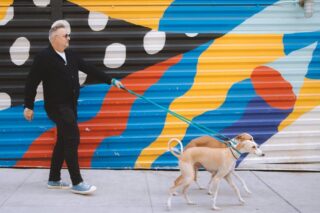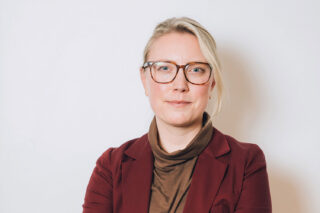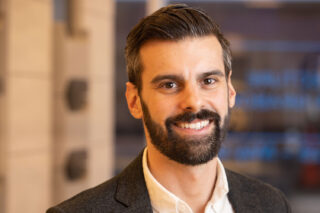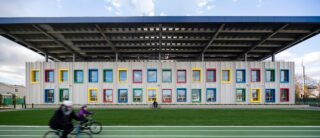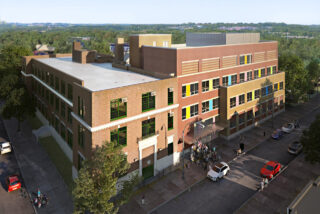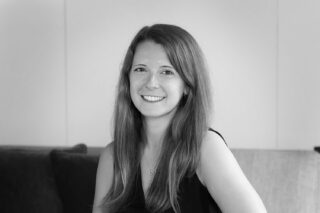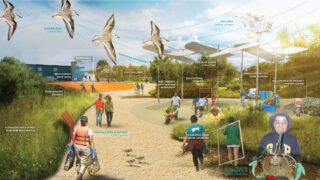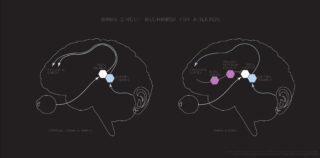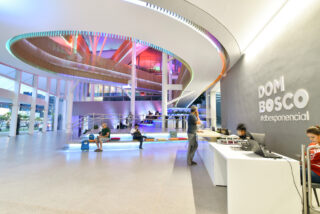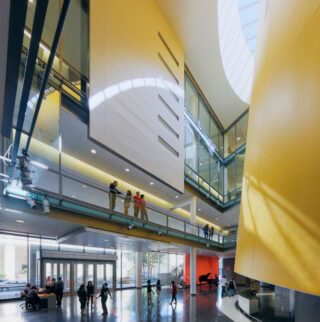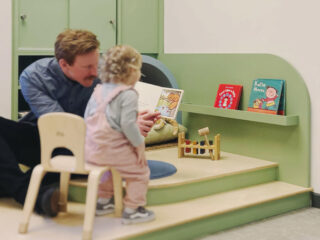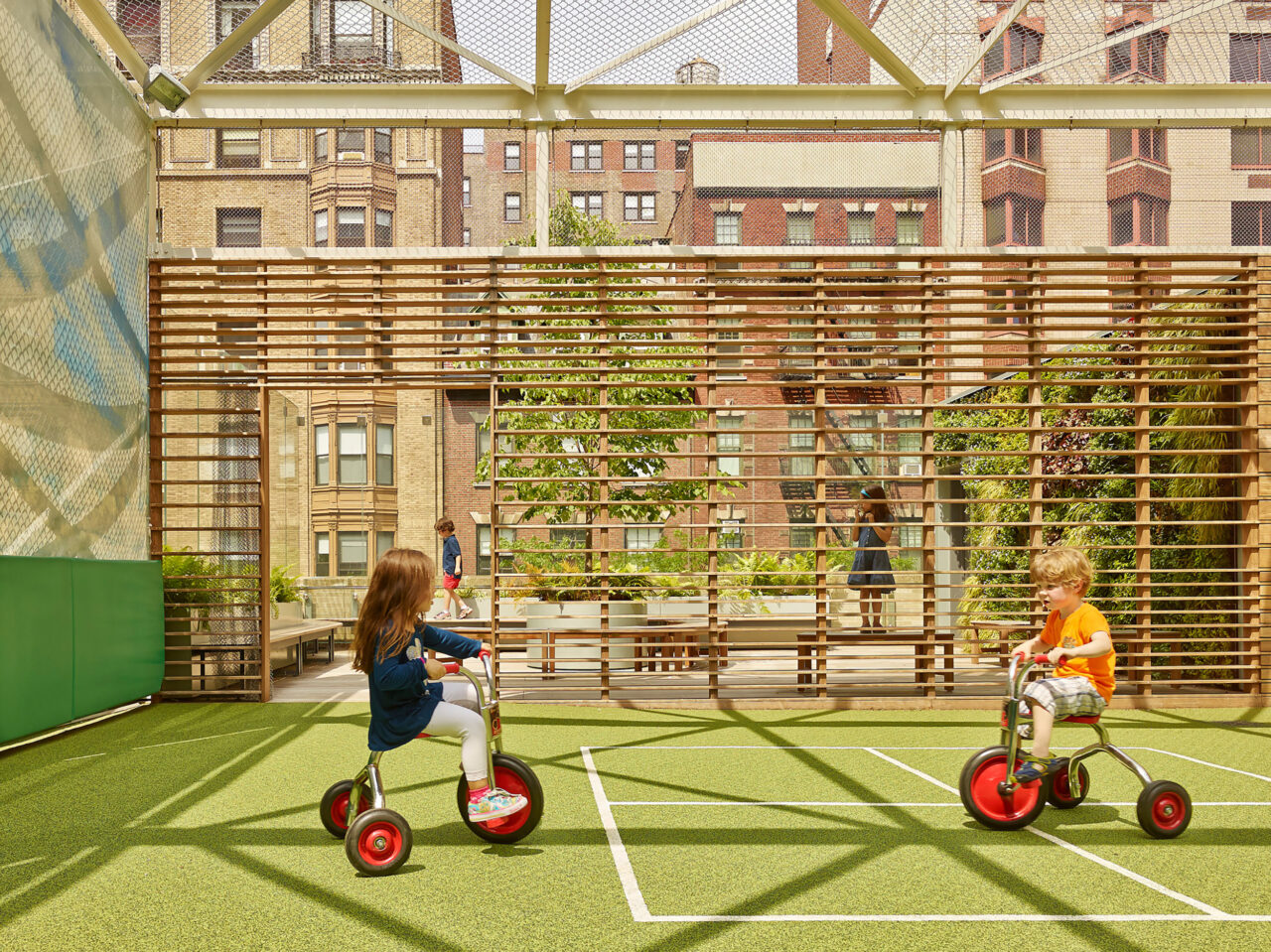


To design more inclusive schools, we have to leverage the power of choice. My team and I think about choice in several different ways as we partner with schools to create healthy and engaging learning environments for all students, including those with nonconforming minds and bodies. In one sense, choice is a deliver-able: something we design into the fabric of inclusive learning environments and play spaces. It refers to the ability both to move between different environments and to alter one’s environment, engaging students’ self-knowledge about how they learn. In another sense, choice is part of our methodology: a thread woven through our interviews with stakeholders that we use to understand the specific needs of a school community and to build consensus toward a design outcome.
To build choice into our process and design work, we turn to neuroscientific research that measures diverse brain responses in a controlled setting, and qualitative studies in environmental psychology that focus on real-world settings. We also leverage the operational expertise and experience of our clients. And we work internally to mitigate ableist and neurotypical bias throughout the design process.
Research indicates that students are more engaged and more active when their learning environments allow them to choose among a variety of spaces: open or enclosed, lighter or darker, indoor or outdoor, highly stimulating or exquisitely serene. Different colors can define different spaces—by furnishings, floorcoverings, chromatic lighting, or painted walls. A variety of sensory experiences supports neurodiverse learning. In outdoor areas, a mix of “hard and soft surfaces, green or ‘natural’ areas, and variations in sun and shade” promote self-guided activity and exploration, according to the authors of Physical Activity Design Guidelines for School Architecture (PLoS One, 2015). Spatial difference can also correspond with different programs. A pristine white science lab, for example, contrasts with a moody, acoustic-paneled music room. And spatial variety can help support pedagogical goals of structured versus self-guided learning and play.
Adjustability is another dimension of choice. What can a child change? Placing children in environments they can manipulate helps put them at ease and reaffirms that their individual needs and preferences matter. We aim to give students opportunities to open a window, turn on a task lamp, dim the lights, draw a curtain, move a beanbag, pull up a chair, or change the color of an LED. This principle applies in educational settings across all ages. Teachers and adult students also enjoy being able to adjust their environments. Sometimes it’s a functional necessity because the same space has to serve multiple uses and users, simultaneously or at different times. Educators also note the importance of flexibility in meeting the needs of neurodiverse students and engaging students with attention differences.
In addition to increasing access through choice, we aim to improve baseline environmental qualities like daylight and acoustics for students and the whole school community. Children with learning differences may be most acutely sensitive to factors like glare and reverberation, but everyone feels the effects of environmental design. Daylight access has been shown to impact students’ energy and attention, as do circadian rhythms and sleep cycles. Biophilia advocates have shown a measurable benefit from access to outdoor greenery. Loud ambient noise levels have been linked to increased levels of fatigue, stress, and irritability in students, according to international studies. What’s good for marginalized learners is often good for everyone—especially if it’s offered in the form of a choice.
Designing for choice supports the “Targeted Universalism” framework developed by UC Berkeley’s Othering & Belonging Institute, which pairs universal goals—for example, that all students should have access to spaces in which they feel at ease—with targeted strategies for achieving those goals. Instead of mandating formally equal treatment and a one-size-fits-all approach, we need to be creative in devising varying forms of support to help individuals reach a shared goal.
My office book club recently read Year of the Tiger by Alice Wong, an eloquent advocate for the disability community. Regarding the Americans with Disabilities Act (ADA), Wong says, “If there’s any message I could share with people who are not disabled, it is the fact that access is so much more than just compliance with the ADA. Access is something that we all have the capacity, in some way or another, to give to one another.” For example, a person can accommodate a friend who feels tired or had a bad day simply by offering to reschedule a planned activity. Wong’s call to think more expansively about ac-cess starts with empathy—and involves offering choices.
When we set aside preconceptions about differently abled and non-neurotypical learners, we discover new possibilities. Former Supreme Court Justice William Brennan wrote in a 1987 decision, “society’s accumulated myths and fears about disability and disease are as handicapping as the physical limitations that flow from actual impairment.” Offering choice through innovative, thoughtful design and programming can help communities overcome perceived limitations.
Choice empowers students to be active learners, not passive pupils. Long embedded in student-led pedagogies like Montessori, it’s also part of our pro-gressive toolkit for inclusive design.
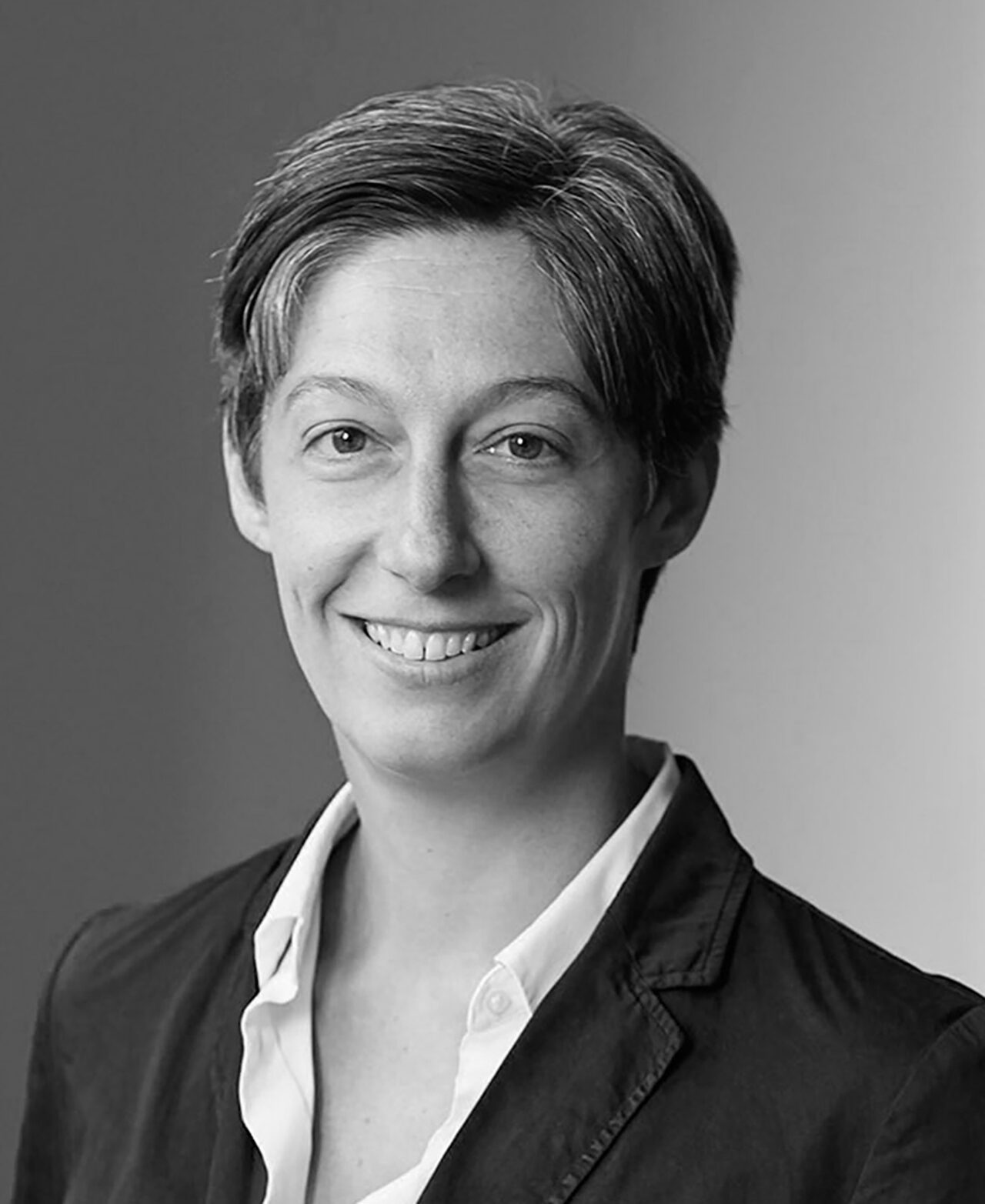
Sara Grant, AIA, is a partner at MBB Architects. She leads the design of inclusive, healthy, and sustainable environments that empower diverse communities. The firm’s K–12 education clients include St. Hilda’s & St. Hugh’s School, Rodeph Sholom School, Brooklyn Heights Montessori School, AltSchool, Grace Church School, PS 330Q Helen M. Marshall School, PS 19Q Marino Jeantet School, and PS 41 Greenwich Village School.








